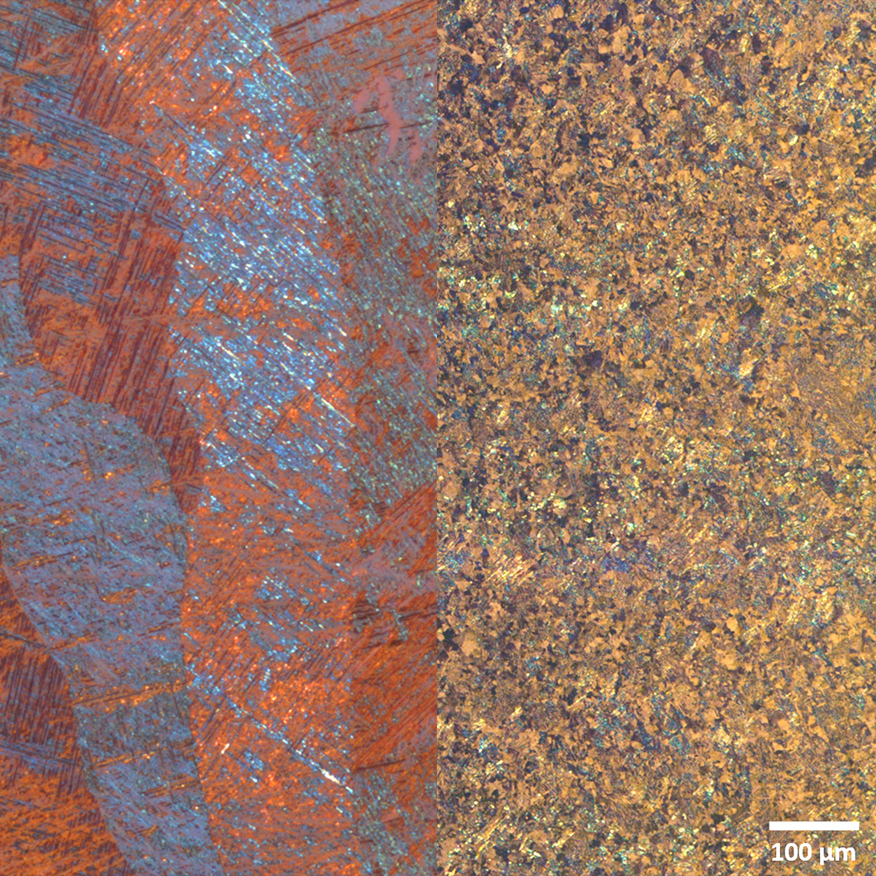Additive manufacturing, also known as 3D printing, has been called the third wave of manufacturing and is leading the trend towards mass customisation of manufactured parts. Titanium (Ti) is an exciting material for this kind of fabrication. It is one of the strongest metals in the world, is resistant to rust and corrosion yet remains ductile. It’s also expensive. This requires it to have excellent mechanical properties to make it worth using.
Current Ti alloys used in 3D printing cool into column-shaped grains. This leads to different mechanical behaviours in different directions. This can lead to processing difficulties in some alloys, including cracking and distortion.
To solve this problem, a team lead by Prof. Mark Easton at RMIT University in collaboration with others at CSIRO, the University of Queensland and Ohio State University has developed titanium-copper (Ti–Cu) alloys that have an ultra fine grain size. The copper facilitates the seeding of new crystals leading to fine grains that grow equally in all directions. This results in a structure that has more homogeneous properties and better processability than current alloys.

A 3D printed titanium aluminium alloy (left) compared to the new titanium copper alloy (right). Both have been etched to reveal the grain boundaries and imaged using optical light microscopy with a polarised lens.
Items printed with this new Ti–Cu alloy are as strong or stronger than those produced from current titanium alloys by using traditional manufacturing. The copper is also relatively cheap and easy to use in alloy production and brings antibacterial properties and biocompatibility that could ideally position this alloy for use in bespoke 3D-printed medical implants.
Scanning and transmission electron microscopy along with elemental mapping and light microscopy were used to assess the micro- and nano-structures within the alloys throughout the research process. This was conducted at RMIT Microscopy and Microanalysis Facility, a linked lab of Microscopy Australia and the results have been published in Nature.
Strong and more cost-effective titanium alloys will make 3D printing a viable manufacturing method for:
3D-printed titanium-copper bars with titanium powder and copper powder. Credit: RMIT University
October 1, 2020